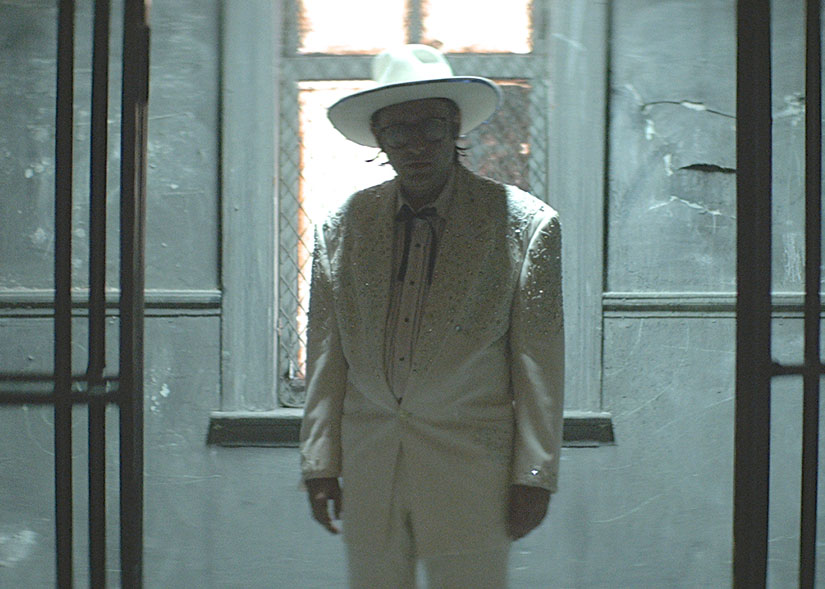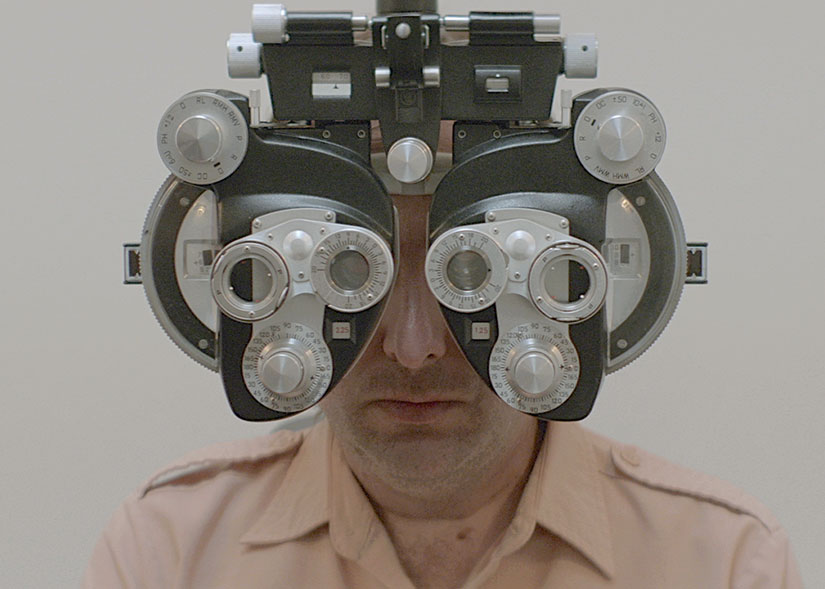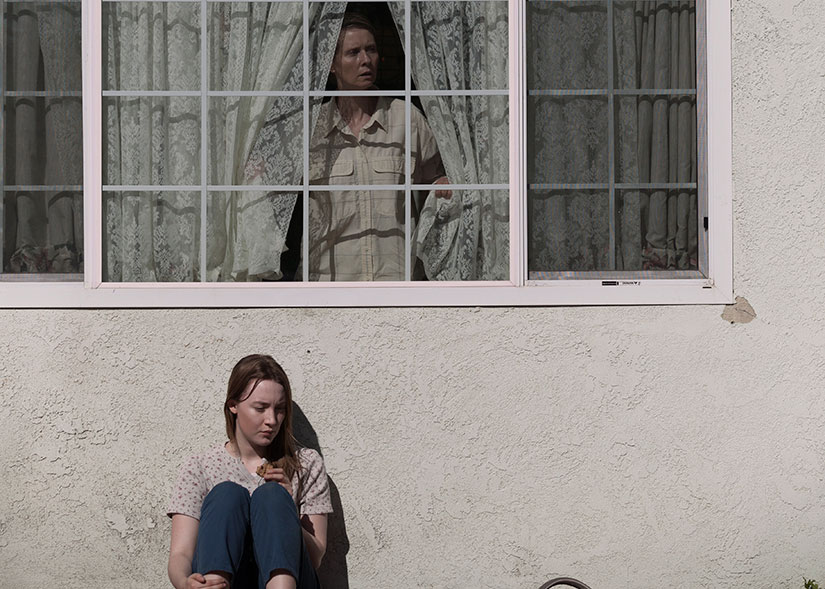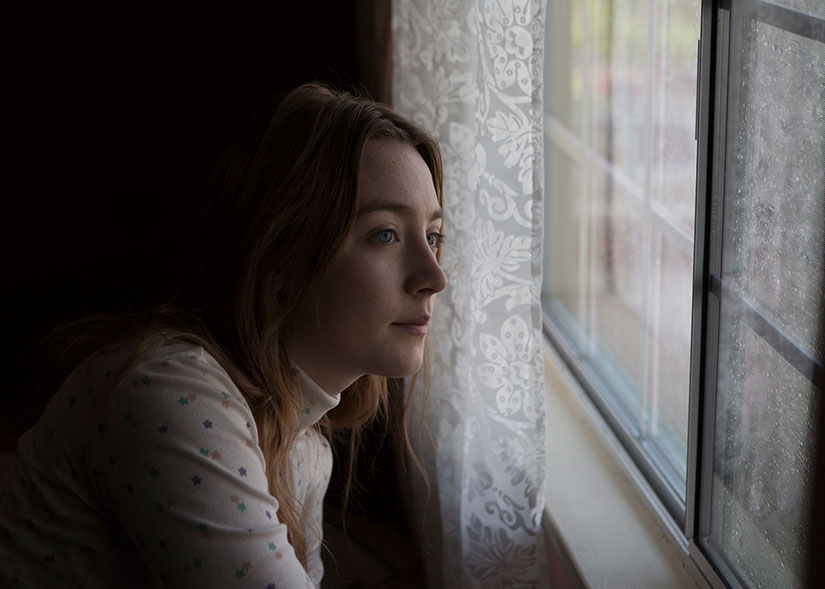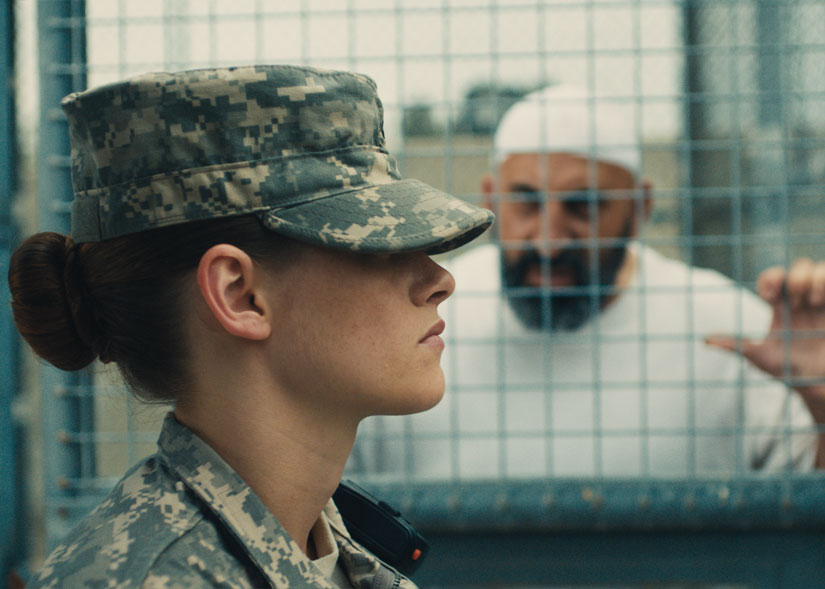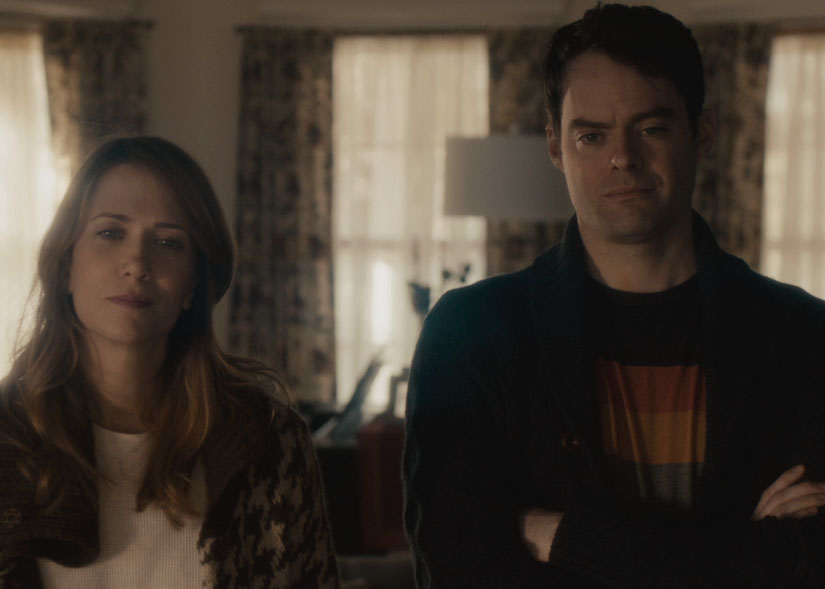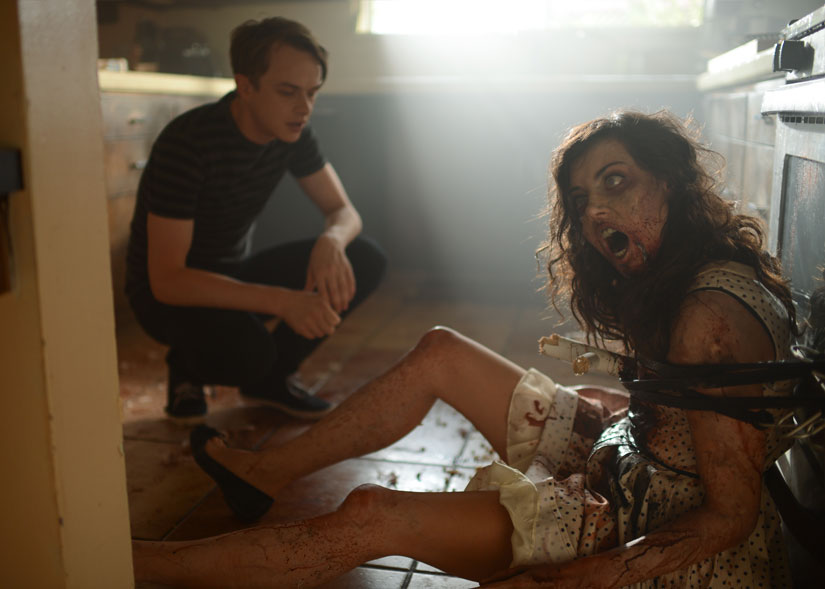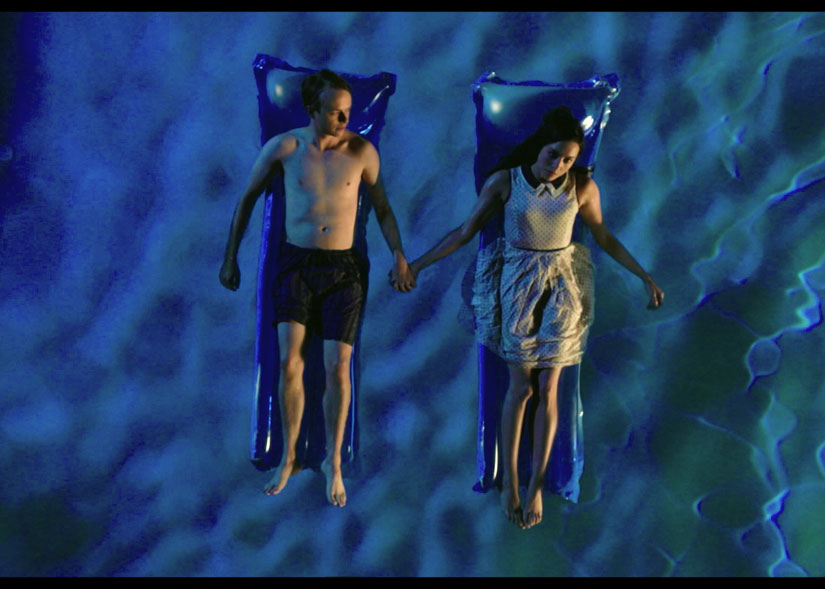[Sundance Review] Entertainment
Three years ago, Rick Alverson’s previous film, The Comedy, premiered at Sundance. The reception was wholly divisive, with many either loving or hating it. In the same vein as The Comedy, Alverson’s follow-up film, Entertainment, intends to poke and prod at audiences with the same subversive fervor.
Entertainment
Director: Rick Alverson
Rating: N/A
Release Date: January 24, 2015 (Sundance)
The unnamed protagonist of Entertainment (referred to as The Comedian, portrayed by Gregg Turkington) is a middle-aged comedian touring the Californian desert while playing at less-than-stellar venues to even lesser-than-stellar audiences. By day, he’s a schmuck wandering around unpronounced areas, but by night, he slightly comes alive once he hits the stage. However, his jokes are alienating, jarring, and unforgivable, and when audiences heckle him, he heckles back twice as hard, creating awkward and uncomfortable situations. Throughout his journey, he leaves nightly voicemails to an estranged daughter who doesn’t seem too interested in seeing or hearing from him. The film comes to a head when The Comedian attempts to perform at a glitzy children’s birthday party in Hollywood, only to have a mental breakdown.
Fans of Turkington will instantly recognize The Comedian’s similarities to Turkington’s most famous character, Neil Hamburger. The jokes in the film resemble some Hamburger’s style of comedy that is intended to ruffle feathers and create unease within the audience. Indeed, it’s this uneasiness that’s carried over through the entire film. The Comedian is washed-up hasbeen (if he ever had been in the first place), and his desperation to justify his performances is truly uncomfortable to witness. Off-stage, his jarring discomfort is seen, such as an encounter with another man (Michael Cera) asking for help inside a rest stop bathroom.
The title Entertainment is used ironically, since the film doesn’t necessarily entertain audiences. Rather, the film challenges its viewers to truly examine what entertainment is and how much so-called entertainers have to go through to deliver their brand of “entertainment.” Juxtaposed with The Comedian’s self-deprecating performance is his tour buddy, Eddie the Opener (Tye Sheridan), who applies clown makeup and partakes in scat humor for laughs. Which of these approaches can be defined as “entertainment?”
From a film standpoint, Entertainment is admittedly boring and uninteresting where crowds will be split between those that “got” it and those that didn’t. However, from a deeper level of examining and critiquing art, Entertainment is the type of film that will have audiences picking it apart to find its true meaning. In saying that, it’ll fit well with fans of alternative/anti-comedy and art school crowds, but general audiences will avoid it.
[Sundance Interview] Cast and Director of Cronies
Video shot and edited by J. Frank.
When I said really enjoyed Cronies in my review, I meant it. The film embodies the complexities of camaraderie, friendships, and city life in a simple, digestible way that anybody can relate to it. During this year's Sundance Film Festival, J. Frank and I had the wonderful opportunity to talk with Zurich Buckner, George Sample III, Brian Kowalski, and Michael J. Larnell about the film. Cronies is bound to find distribution soon enough, so keep it on your radar over the year and make sure you catch it the first moment you get a chance.
[Sundance Review] Stockholm, Pennsylvania
Can a film be considering exceptional if the first two acts are brilliant, but trails off as the third act rears its ugly head? That’s the question I’d like to address with my review for Stockholm, Pennsylvania. As all forms of art are concerned, the full product is only as good as its weaknesses, and unfortunately, Stockholm, Pennsylvania showed so much promise, just to dovetail into a disappointing ending.
Stockholm, Pennsylvania
Director: Nikole Beckwith
Rating: N/A
Release Date: January 23, 2015 (Sundance)
After 17 years of captivity, kidnapping victim Leia (Saoirse Ronan) returns home to parents she has no recollection of. While Glen (David Warshofsky) is passive (but confident) about Leia’s transition into her new life, Marcy (Cynthia Nixon) is desperate to recreate the attachment and bond between a mother and her child. Yet, despite all of Marcy’s attempts to reconnect, Leia’s transfixed with her captive, Ben (Jason Isaacs), while also struggling to make sense of reality and the lies Ben fed her for almost two decades. After no progress is made, Marcy’s desperation takes a dark turn as she suddenly becomes the monster she tried so hard to protect Leia from.
[youtube id="uzES5iXnO7E"]
The acting in Stockholm, Pennsylvania is brilliant. Ronan and Nixon delivered performances that should honestly be considered for major studio nominations. Leia is written as a complex character who is both headstrong and confident in herself, yet naïve to the real world. As the story progresses, Leia begins to break out of the hold that Ben held on her while she attempts to make sense of her new life. Ronan’s ability to balance the contrasting elements of Leia’s character should not go unnoticed, and will hopefully elevate her to the next level. On that same note, Nixon’s take on Marcy is so thrilling and provocative as audiences witness a Mother driven to dark lengths to ensure she can once again become the mother to her child that went 17 years without one.
The performances wouldn’t be as strong as they were without writer/director Nikole Beckwith’s vision. Stockholm, Pennsylvania is adapted from her stage play, and it truly shows thanks to the close-knit scenes between actors. Structured much like a short story, many of the narrative’s details go unsaid, leaving audiences to fill in holes. As someone with a Literature background, I loved how the details left unsaid shared the same importance with the details that are openly addressed.
However, as I inferred earlier, the film comes apart in the third act as Marcy spirals into an antagonistic role towards Leia. The character twist comes off too exaggerated and unrealistic and essentially changes the film’s tone from a psychological drama to a pseudo-suspense thriller that ultimately takes away from all of the goodwill built up prior to the conversion.
Despite a disappointing third act, Stockholm, Pennsylvania is still one of the better films I watched at Sundance. Beckwith’s take on examining the post script of a life following such a traumatic event like Leia experienced is intriguing, especially in the wake of the media blitzes that surround these situations; it’s a perspective that many don’t typically consider. With stellar performances by Ronan and Nixon, Stockholm, Pennsylvania is well worth the price of admission, even if the ending ultimately falls flat.
[Sundance Review] The Summer of Sangaile
One thing I’ve noticed at Sundance this year is the amount of coming of age films that are featured on the program. One such film is The Summer of Sangaile, a Lithuanian film that features two culturally different teenage girls developing a romantic, electric connection with one another. If this sounds somewhat similar to 2013’s Blue is the Warmest Color, that’s because there is indeed a lot of similarities between the films; however, whereas Blue is the Warmest Color was comical in its depiction of love (perhaps due in part to its source material being a graphic novel), The Summer of Sangaile is grounded and offers a sweeter approach to first love.
The Summer of Sangaile
Director: Alante Kavaite
Rating: N/A
Release Date: January 22, 2015 (Sundance)
Sangaile (Julija Steponaityte) is a somewhat awkward teenage girl vacationing in Lithuania for the summer transfixed by stunt planes despite her fear of heights. Noticing her fascination with the planes, Auste (Aiste Dirziute) rigs a contest to allow Sangaile to ride in one, but she refuses. Auste’s determination to befriend Sangaile goes undeterred, and the two quickly connect with one another, resulting in an undeniable romantic and sexual chemistry that allows both girls to open up to one another. However, as they grow closer, Sangaile’s level of comfort begins to be pushed as Auste attempts to fully break her out of her shell.
The strength of the film comes in the performances by the two women. While the characters themselves (and ultimately, the narrative as a whole) are a bit cliché, both Steponaityte and Dirziute are able to carry their characters past any aforementioned clichés. Dirziute especially shines in her debut film with a sense of subtle longing in her mannerisms, like a gaze directed at Sangaile that lasts just long enough.
The Summer of Sangaile, like most foreign festival films, may not get wide distribution, but should still be searched for by those that appreciate strong cinematography and coming-of-age films. Unfortunately, the tired character archetypes and predictable narrative ultimately hold The Summer of Sangaile back.
[Review] White Bird in a Blizzard
This review was originally published as part of our Sundance Film Festival coverage. It is being re-posted to coincide with the film's theatrical release.
[youtube id="NMU1Hq3pQjM"]
White Bird in a Blizzard
Director: Gregg Araki
Rating: N/A
Release Date: January 20, 2014 (Sundance)
With a name like White Bird in a Blizzard, I couldn't help but find myself intrigued by the film. It didn't hurt that indie darling Shailene Woodley (The Spectacular Now) starred in the film, either. There's a simple connection drawn from the title to the film's premise, yet director Gregg Araki never lets White Bird in a Blizzard ever grow stale. Rather, what starts off tonally as a pseudo-romantic coming-of-age film quickly becomes a dark mystery thriller that had me pinned to the edge of my seat.
Set in the late 1980s, White Bird in a Blizzard is about Kat Connor's (Woodley) relationship with her alcoholic mother, Eve (Eva Green), and cowardly father, Brock (Christopher Meloni). As Kat matured into a young adult, her mother's intense jealousy grew as the distaste of her relationship and life began to take over her psyche in a scary midlife crisis. When Eve mysteriously vanishes, both Kat and Brock face an uncertain future. As the years pass, the disappearance is nothing more than a curiosity until Kat returns home during a holiday college break when new information arises that could complicate her relationships with everyone around her.
It's a bit hard to summarize White Bird in a Blizzard because of all of the plot twists and turns. As I implied in the introductory paragraph, White Bird in a Blizzard carries a certain connotation with it, yet the film is anything but straightforward. This is complemented by Woodley's performance, which is vastly different than anything she's done before. Araki is known for his use of sex and nudity (re: Mysterious Skin), and White Bird in a Blizzard is no difference. Woodley spends just as much time topless as she does clothed, and it came completely unexpected. However, it's all within tasteful reasons that actually serve the plot. Much like the aforementioned Mysterious Skin, there's a creepy, unassured tone underlying the entirety of the film that will keep you second-guessing everything and everyone, tempered by a foreboding notion that something bad is going to happen, and soon.
This sensation is perhaps most characterized by Green's stellar performance. You can't help but both sympathize with her and her unfortunate sense of marital and livelihood stagnation, yet you're frightened and creeped out by her episodic attacks on Kat. Meloni, too, demonstrates his range by playing the assuming Brock, running counter to the rest of his filmography. Hell, even Shiloh Fernandez (Evil Dead) puts in a solid performance as Kat's dimwitted ex-boyfriend.
White Bird in a Blizzard will keep you moving in your seat, whether it's due to arousal or discomfort... which is perhaps the best way to describe a Gregg Araki film. It may be hard to find an audience due to the sexual nature of the film, but if you get the chance to see it at another festival or an independent theater, I highly recommend checking it out.
[Review] Camp X-Ray
This review was originally published as part of our Sundance Film Festival 2014 coverage. It is being re-posted to coincide with the film's limited release.
Camp X-Ray
Director: Peter Sattler
Rating: N/A
Release Date: January 17, 2014 (Sundance)
Guantanamo Bay still serves as a dark footnote in American history more than a decade after its establishment. Everything about the detention camp, from its mistreatment of its "detainees" to the very reason for its existence, is inhumane and utterly sickening. Camp X-Ray is about one specific camp, the titular Camp X-Ray, which served as a temporary detention center in the Guantanamo Bay. Writer/director Peter Sattler's film attempts to humanize both guard and detainee alike.
Amy Cole (Kristen Stewart) is a recently-assigned rookie guard at Guantanamo Bay. While she's cordial and friendly with the other guards, it's with a Gitmo detainee, Ali (Peyman Moaadi), who Cole makes a real connection with. The relationship starts on a frosty tip, Cole the newcomer and Ali the years-long detainee. The dynamic of their friendship, as is made evident early on, revolves around this dichotomy between the two where their individual situations are more common than meets the eye.
Unfortunately, Camp X-Ray is bogged down by stereotypes, ranging from the power-hungry superior officer to the young, naive solder who inevitably falls in line. In a way, the shallow characterization of the supporting cast helps accentuate the focus on both Cole and Ali and their friendship. However, the emotional crux of the film relies on Stewart's performance, which oftentimes showed the potential and range she displayed in Into the Wild, yet is unable to tap into here. When it comes time for Cole to move past her hardened soldier demeanor and show true human emotion, Stewart falters. Whether it was Sattler's direction to keep Stewart reined in to maintain the aforementioned toughness, or simply Stewart's inability to let go, it was hard to look past this one low scene in a film otherwise full of high praise for the actress.
Camp X-Ray doesn't attempt to make much of a political statement, nor does it attempt to excuse the accusations of inhumane treatment that took place at Guantanamo Bay. What it does do, however, is explore a poignant, unlikely friendship between captor and captured, guard and detainee. Sattler, at times, holds audiences hands as he pontificates the similarities between Cole and Ali, which can be frustrating. However, strong performances by Moaadi and Stewart (the aforementioned scene notwithstanding) are enough to overlook the otherwise easy storytelling.
[Review] The Skeleton Twins
This review was originally published as part of our Sundance Film Festival 2014 coverage. It is being re-posted to coincide with the film's limited theatrical release.
The Skeleton Twins
Director: Craig Johnson
Rating: N/A
Release Date: January 18, 2014 (Sundance); September 12, 2014 (limited)
No matter how close we may be with another person, the likelihood of drifting apart is much higher than simply maintaining the relationship. It's a bitter pill to swallow, but various factors weigh in that can either extend or deter a friendship. What's worse is when family members inevitably drift apart. Craig Johnson's The Skeleton Twins tells the story of two twins who reunite after a 10 year-long estrangement - of course, their reunion brings with it both love and heartache as the duo rediscover and rekindle the bond between them.
Following a failed suicide attempt, Milo (Bill Hader) moves from LA to New York to live with his twin sister, Maggie (Kristen Wiig) and her husband, (Luke Wilson). While the reunion is tepid at best, the twins slowly begin to warm up to one another much in the same way their relationship had been as young children. However, as their love for one another grows stronger, so too do the dark secrets they each hide, ultimately coming to a head and changing their respective lives forever.
Given the fact that the leads are SNL alumni (with a supporting cast of Wilson and Modern Family's Ty Burrell), it's easy to assume that The Skeleton Twins will be indicative of the work both Hader and Wiig are most known for. However, while the film has its fair share of genuine laughs, it's a dark film with large skeletons in the closet (no pun intended) finding their way out. The laughs won't overshadow the melodrama, which should be kept in consideration when watching the film. The drama is compelling, twisted, and is honestly more memorable than the jokes.
In saying that, it was great to see Wiig and Hader not only embrace their comedy, but also showcase their range. The Skeleton Twins can get heavy, but it's never pandering or too imposing to the audience. Can it be melodramatic? At times, sure, but Wiig and Hader handle it deftly. The Skeleton Twins may not necessarily represent the actors' abandonment of comedy for drama, but it certainly shows they're more than capable of handling more trying roles.
[Review] Life After Beth
[This review originally appeared as part of our Sundance Film Festival 2014 coverage. It is being re-posted to coincide with the film's theatrical release.]
Life After Beth
Director: Jeff Baena
Rating: N/A
Release Date: January 19, 2014 (Sundance)
Saying goodbye to a loved one is never easy, especially if the circumstances are tragic. However, given a second chance at life, anybody would accept the situation, right? In Life After Beth, writer/director Jeff Baena uses a zombie uprising as the premise behind is romantic comedy about Zach (Kill Your Darling's Dane DeHaan) and Beth (The To Do List's Aubrey Plaza) as a young couple torn apart following the latter's unfortunate passing. Will a promise to make things better the second time be enough to overlook the elephant in the room concerning Beth's return?
After bonding with his ex-girlfriend's father, Murray (John C. Reilly), Zach slowly begins his journey to recovery. For reasons never explicitly explained, Beth seemingly returns from the dead. With a new lease on love, Zach does everything in his power to ensure the relationship goes smoothly. However, as more time after Beth's return passes, she begins to act out, coinciding with the emergence of more dead people.
Simply put, Life After Beth is an allegory for moving on after the end of a relationship. Again, while it's never explained why Beth's (and the rest of the dearly departed's) return is feasible, I think there's an underlying connection to his "connection" to her. In a minor subplot (which, in retrospect, is perhaps the most important of plot turns), an old friend of Zach's, Erica (Anna Kendrick), appears. As they catch up, Beth's condition worsens as she flips between being Zach dependent (relationship-wise) and Zach dependent ("zombie eat brains"-wise). It's interesting subtext, but unfortunately, not enough to hold the rest of the film up.
DeHaan is one of the most talented up and coming actors of this generation, yet his talents are never fully realized in Life After Beth. The film could have been the perfect breeding ground to illustrate his comedy (as he's mostly known for his dramatic roles), but it never comes to fruition. In contrast, Plaza fits well into the film's mold, easily playing both girlfriend and zombie with her patented deadpan, slacker-esque tone. The entirety of the film, however, is low on laughs. Oftentimes, it grasps for low hanging fruit or easy jokes that just aren't all that funny.

